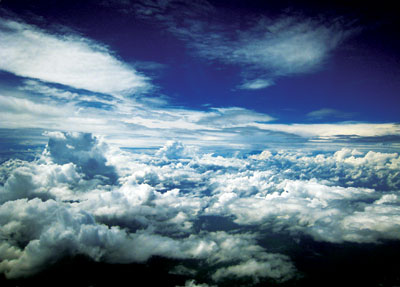All Nonfiction
- Bullying
- Books
- Academic
- Author Interviews
- Celebrity interviews
- College Articles
- College Essays
- Educator of the Year
- Heroes
- Interviews
- Memoir
- Personal Experience
- Sports
- Travel & Culture
All Opinions
- Bullying
- Current Events / Politics
- Discrimination
- Drugs / Alcohol / Smoking
- Entertainment / Celebrities
- Environment
- Love / Relationships
- Movies / Music / TV
- Pop Culture / Trends
- School / College
- Social Issues / Civics
- Spirituality / Religion
- Sports / Hobbies
All Hot Topics
- Bullying
- Community Service
- Environment
- Health
- Letters to the Editor
- Pride & Prejudice
- What Matters
- Back
Summer Guide
- Program Links
- Program Reviews
- Back
College Guide
- College Links
- College Reviews
- College Essays
- College Articles
- Back
Global Warming
Scientists have compiled one of the first comprehensive pictures of what the world might be like when climate change begins to dry up water supplies and trigger a dramatic increase in the epidemics, disease and death. Teams of specialists have assessed the scale of the danger to human health when a future climate triggers weather extreme such
as high temperature, floods and drought.
According to the scientists global warming is likely to affect the human health by increasing infectious diseases, exacerbating respiratory illnesses, increasing the risk and severity of flooding and availability of clean drinking water to the millions of the poorest people in the world. The studies also found that the countries most likely to be affected by the global warming are those least able to combat its effect. Meanwhile the nations which contribute most to climate change are those that will suffer the least.
The world Health organization estimated that changes to the Earth's climate are already caused about 5 million extra cases of illness a year and more than 150,000 extra deaths.
By 2030, however the number of climate- related diseases is likely to more than double, with a dramatic increase in the heat-related deaths caused by the heart failure, respiratory disorders and malnutrition from crop failures. Studies also reveals countries with coastlines along the Indian and Pacific Oceans and sub-Saharan Africa will suffer disproportionate share of the extra health burden. Many of the most important diseases in the poor countries, such as diarrhoea and mal-nutrition are highly sensitive to the climate and the health sector of the countries are struggling to control these diseases and climate change threatens to undermine these efforts.
Scientists estimate that man- made emissions of greenhouse gases are likely to lead to increase in global average temperatures of between 1.4C and 5.8C by the end of the century. Global atmospheric concentrations of the carbon dioxide, methane and nitrous oxide have increased markedly as a result of human activities. The global increase in the carbon dioxide concentration are due primarily to fossil fuel use and land-use change, while those of methane and nitrous oxide are primarily due to agriculture. Warming of the climate is unequivocal, as is now evident from observations of Increases in global average air and ocean temperatures, widespread melting of snow and ice and the rising global sea level. Observation since 1961 show that the average temperature of the global ocean has increased to the depths of at least absorbing more than 80 per cent of the heat added to the climate. Such warming causes sea level rise. Even if the concentrations of all greenhouse gases and aerosols had been kept constant at the year 2000 levels, a further warming of about 0.1C per decade would be expected.
Continued greenhouse gas emissions at or above current rates would cause further warming and induce many changes in the global climate system during the 21st century that would very likely be larger than those observed during the 20th century.

Similar Articles
JOIN THE DISCUSSION
This article has 0 comments.
